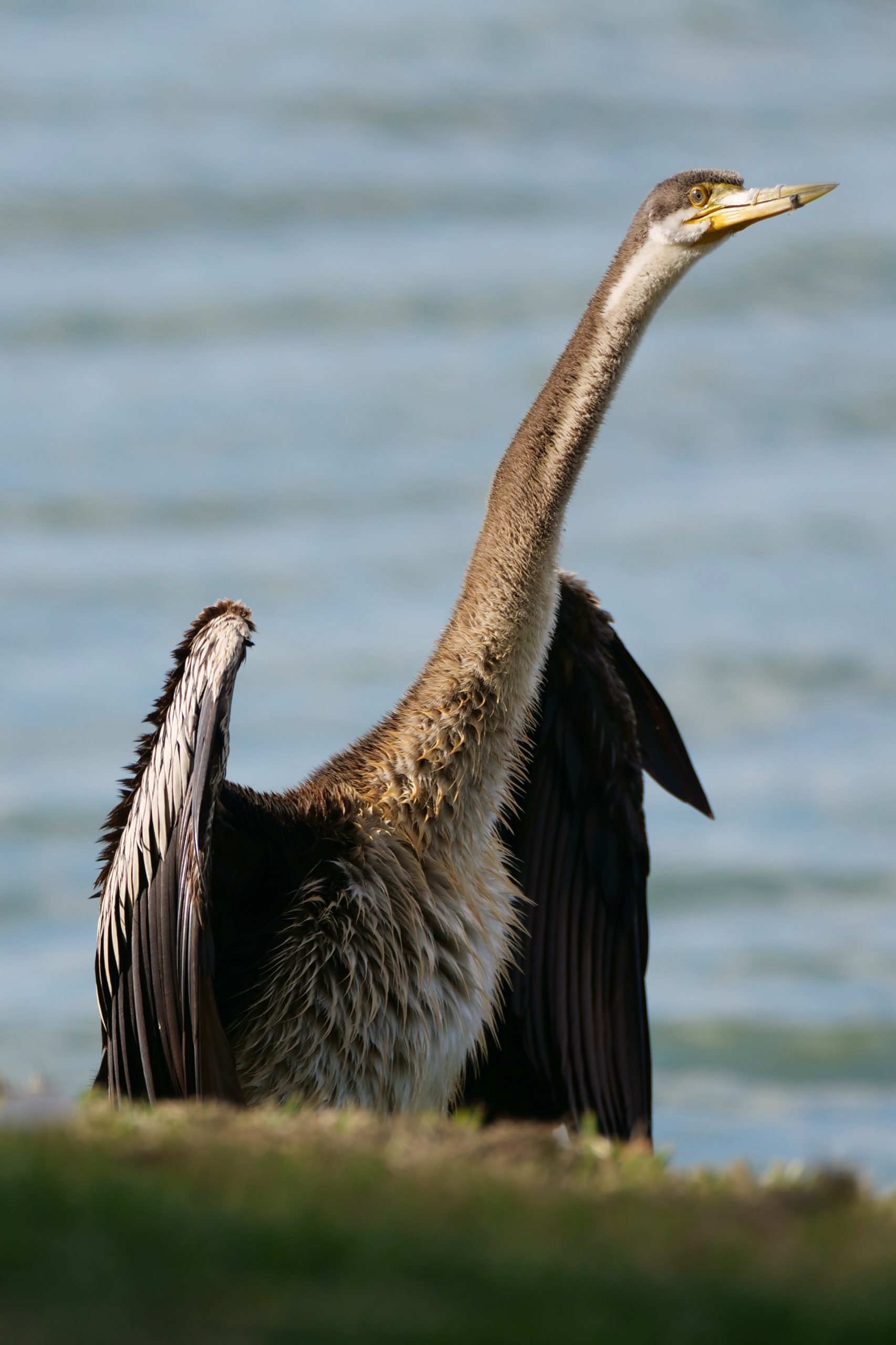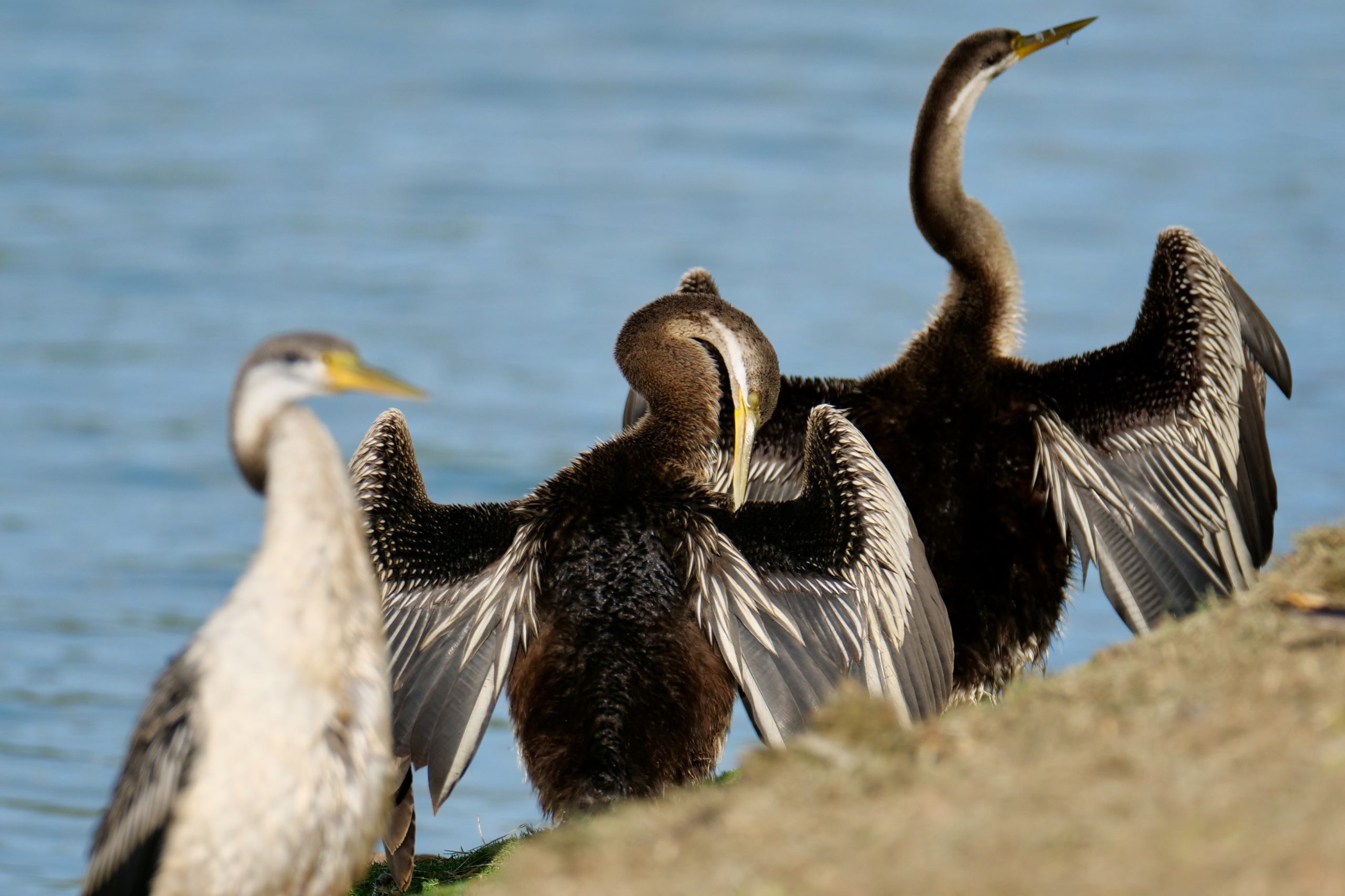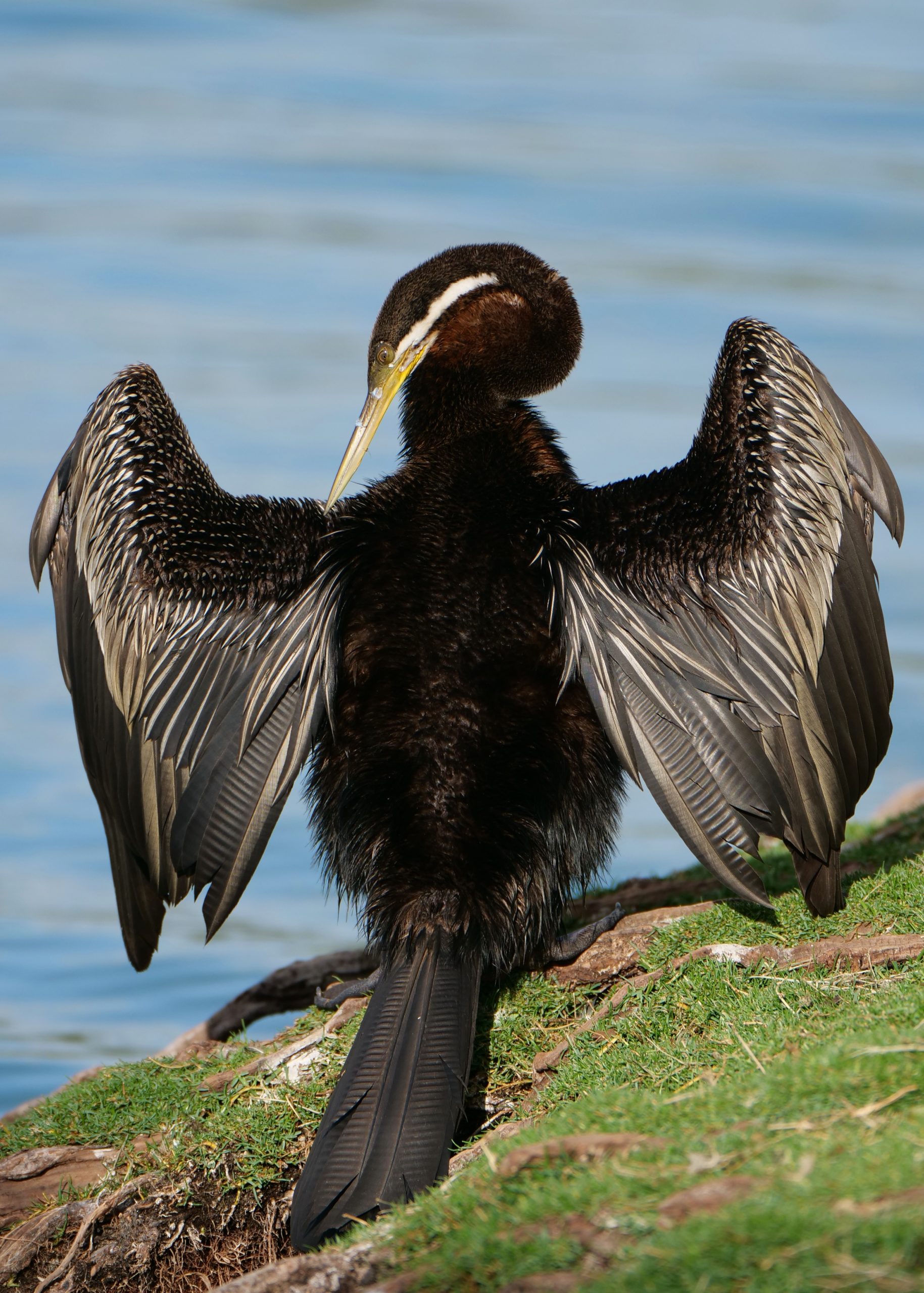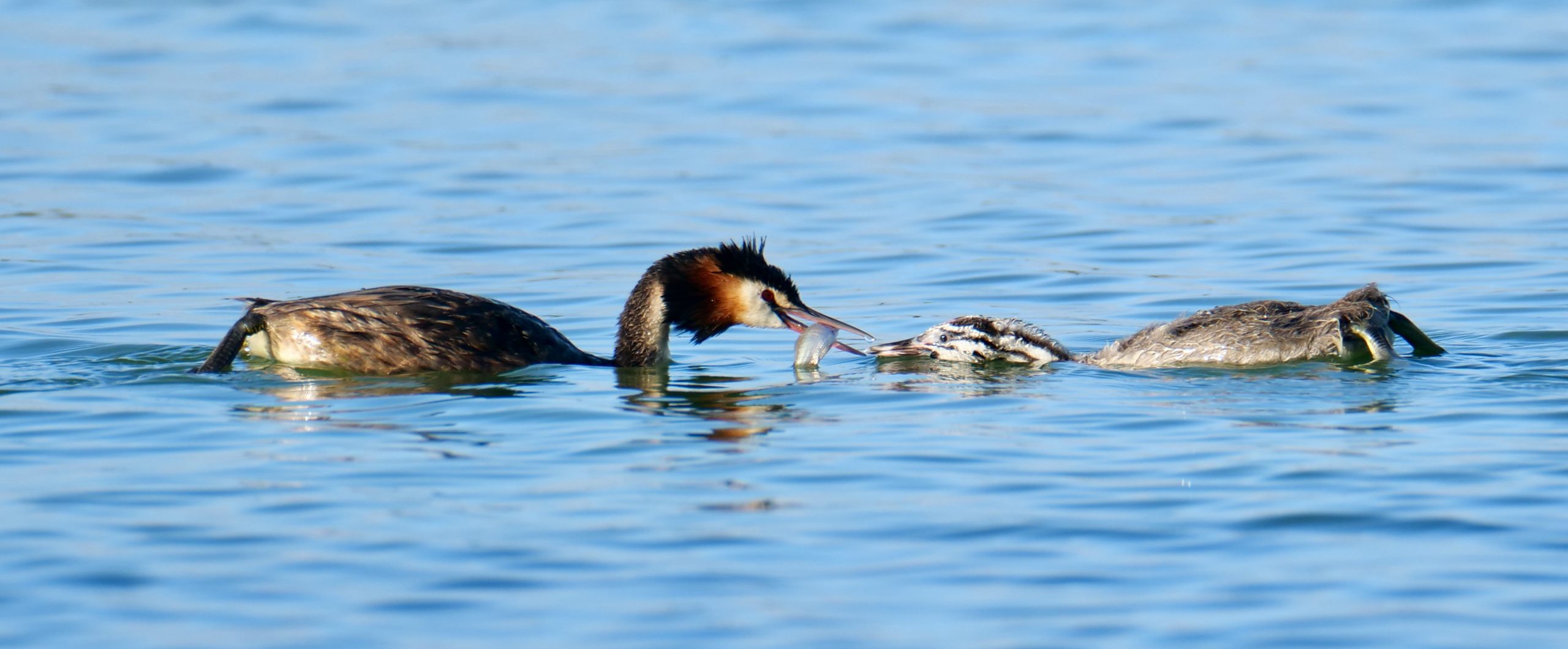…as currently done, locally, by Great Crested Grebes and “snake-birds”.
I took the featured photo at 6.15 pm yesterday, 21 January 2020.
Grebe chicks put on weight at a prodigious rate; this post’s youngest star was quite probably also visible in the “Good Breeding” post – its photos were taken at the same location 18 days earlier.
The chicks are now much too big to ride on their parents’ backs!
The next three photos are in sequence.
They were taken within a few seconds of each other, circa five minutes – or circa three fish – after the featured image.
This sequence features a single fish, which was a little bigger than the ones the adult grebe had caught in the preceding few minutes.
The preceding several transfers from mother or father to chick had each been a “clean”, single exchange.
In this case, however, there was a deal of fumbling; several times the parent had to retrieve the fish and re-present it to the chick.
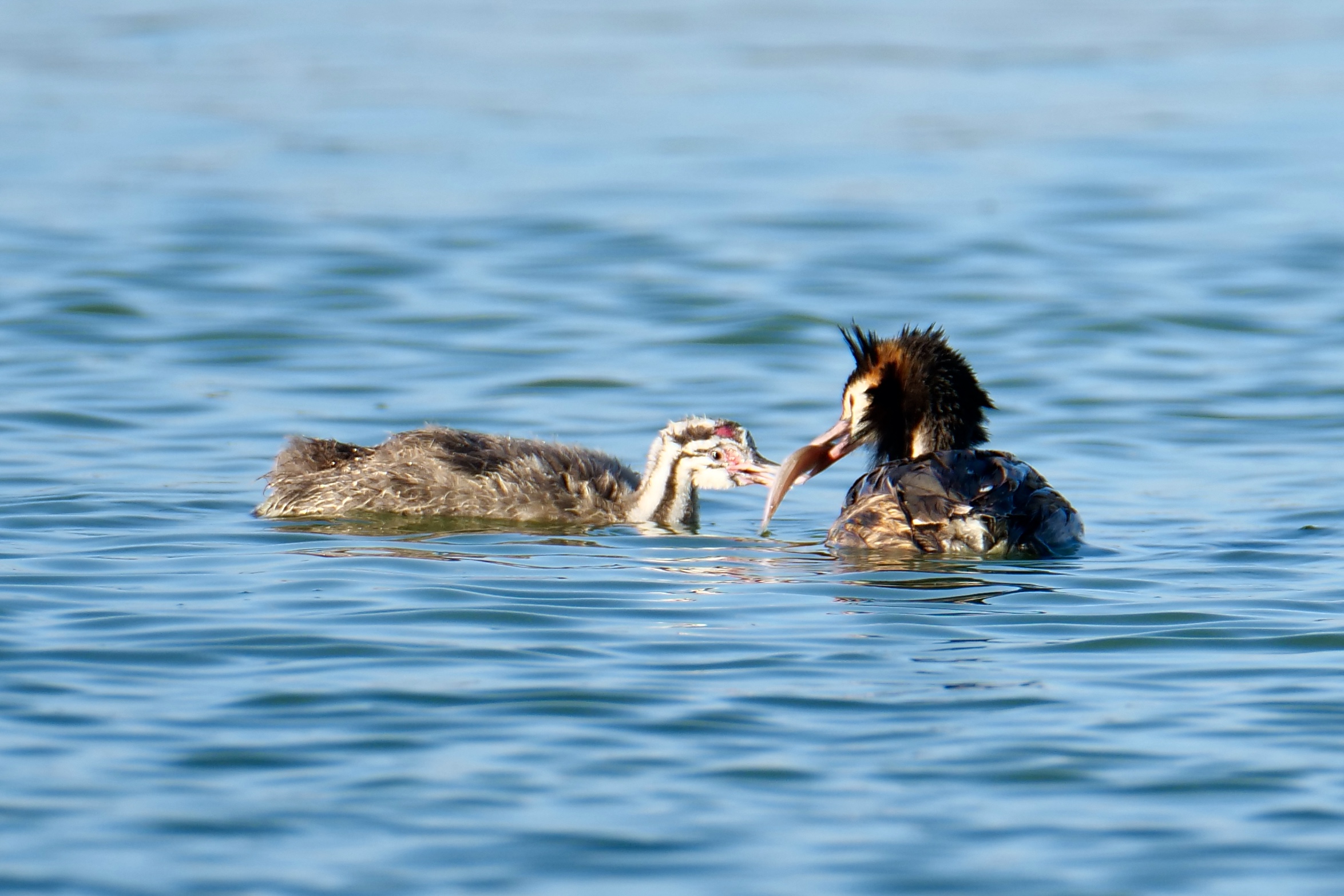
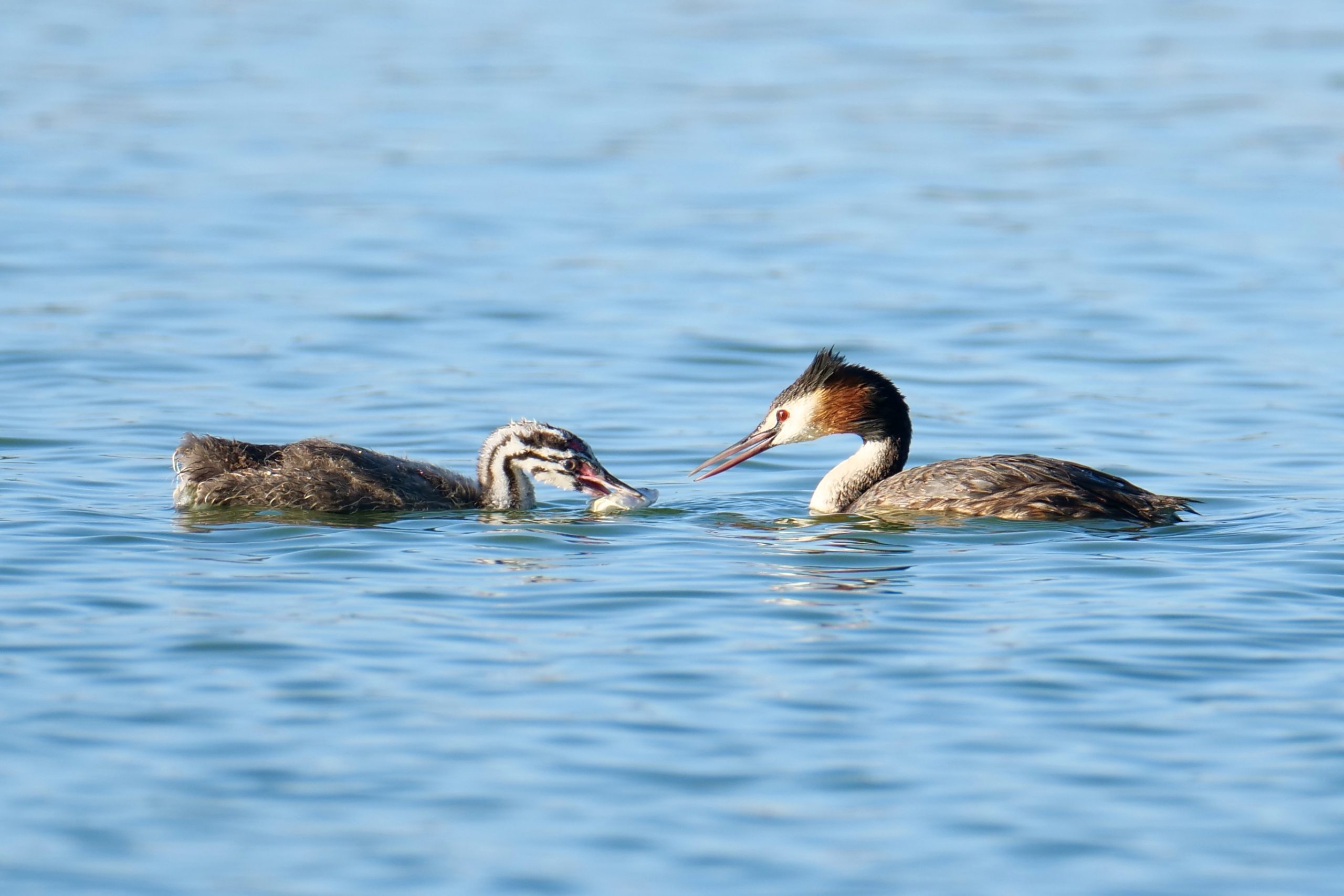
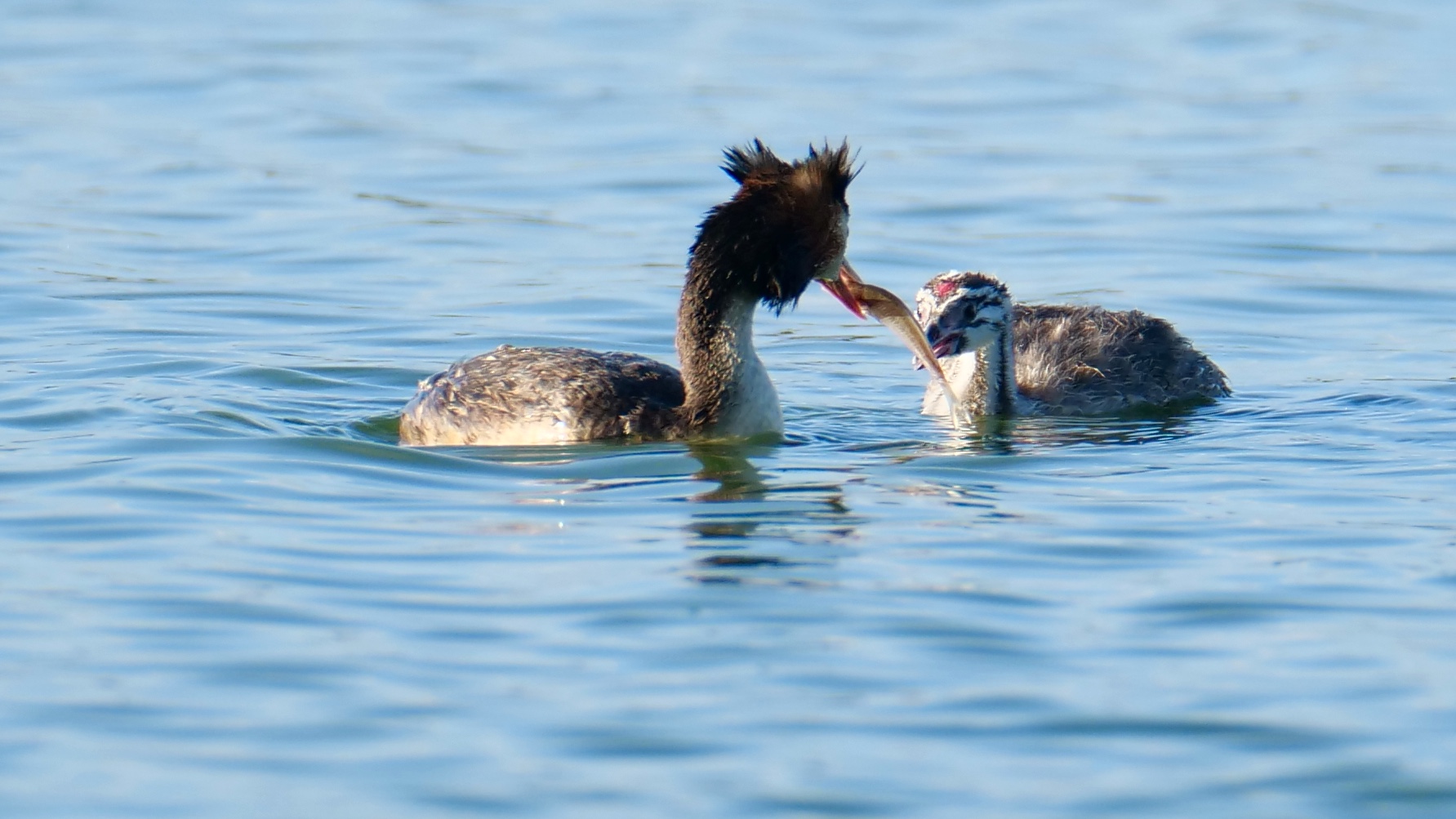
A little more than half an hour earlier, courtesy of one of the aforementioned “snake-birds”, I was startled to see a much bigger fish than any I had ever previously seen at “our” shallow, local lake.
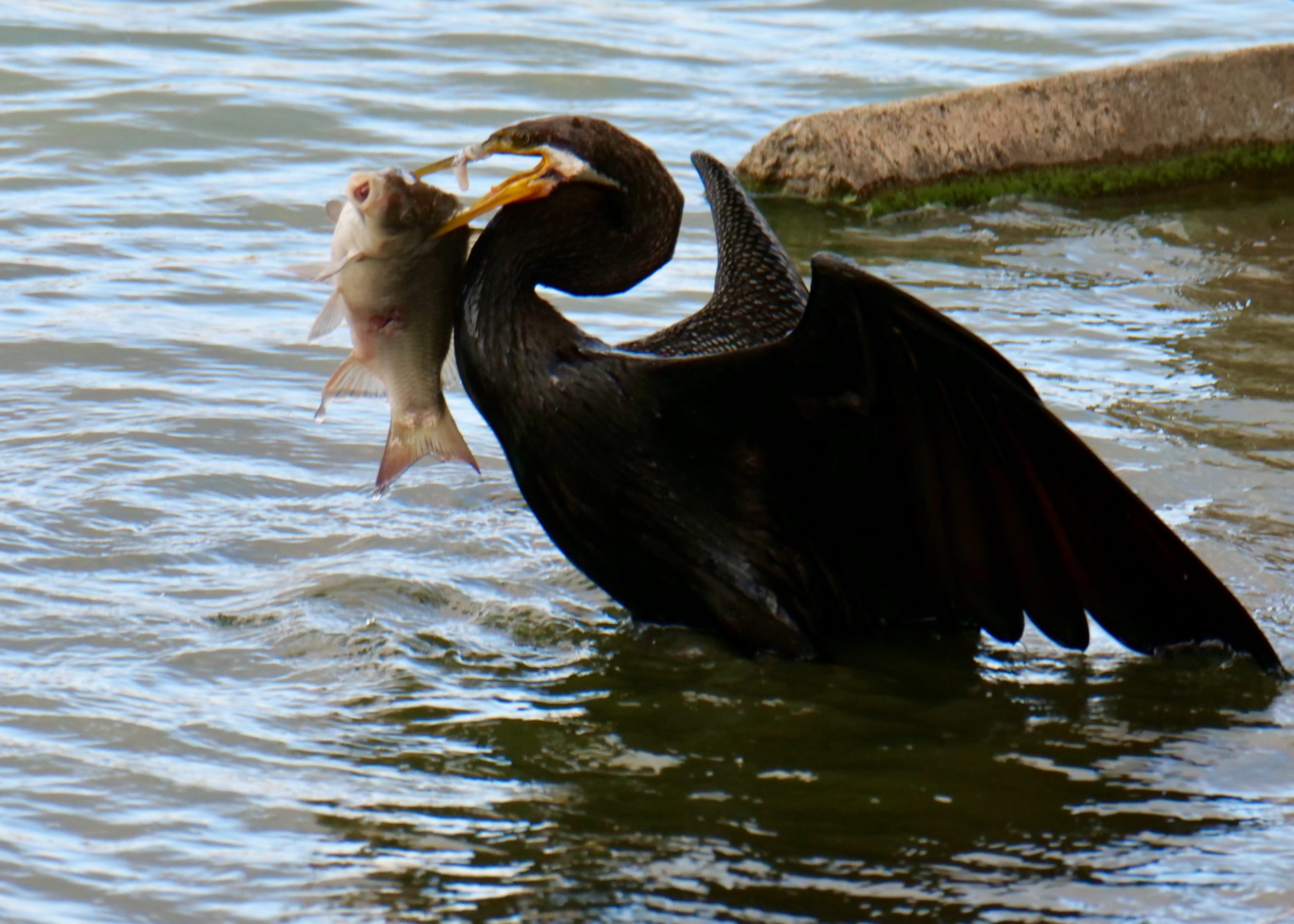
“Snake bird” is one of several names applied to Anhinga novaehollandiae, the Australasian Darter.
This large waterbird’s long, limber neck is the “spring” that powers its very sharp bill, which the darter deploys much as a diving human does his or her speargun.
